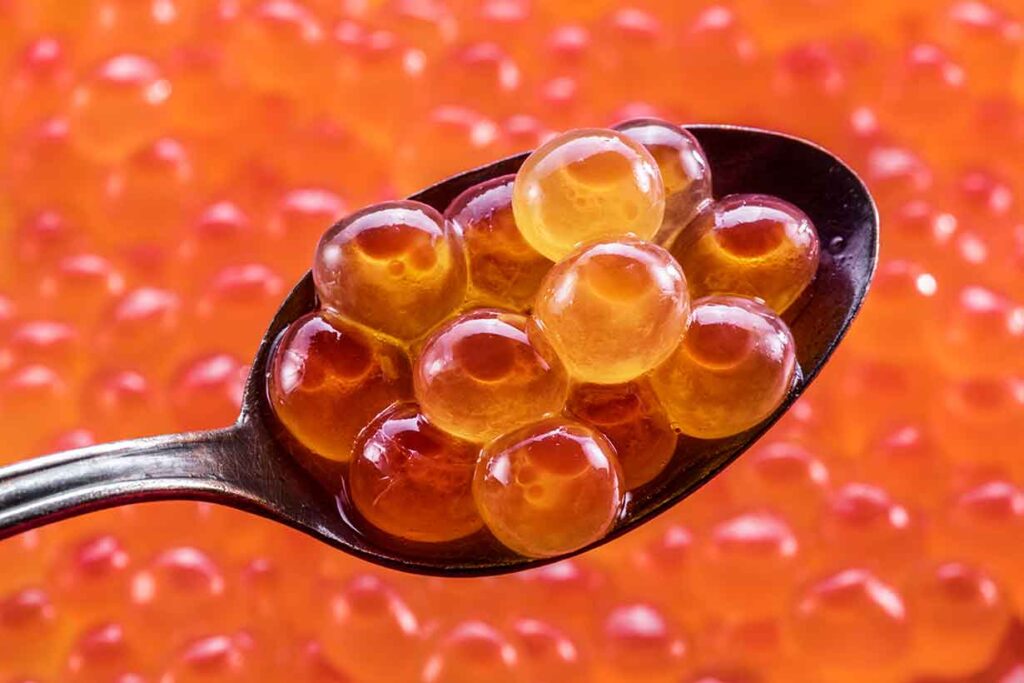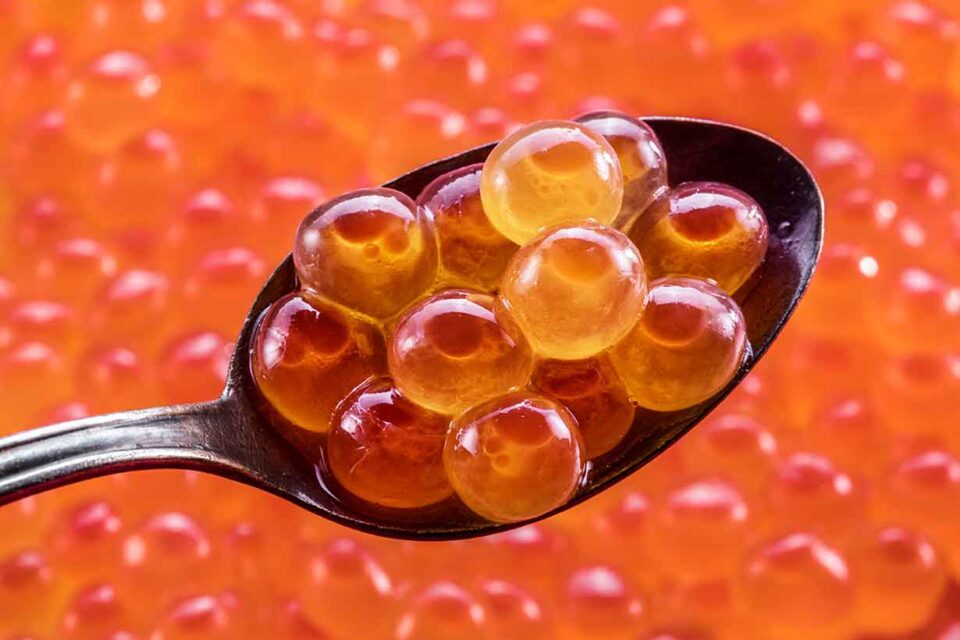Masago is a type of fish roe that has gained popularity in Japanese cuisine, especially in sushi dishes. Known for its small size, vibrant color, and slightly crunchy texture, masago adds both visual appeal and a burst of flavor to many seafood dishes. But what exactly is masago, and why is it so sought after? Let’s dive into everything you need to know about this unique ingredient.
What is Masago?
Masago is the roe (eggs) of the capelin fish, a small species found in cold northern waters. It is often used as a garnish or topping in sushi rolls, poke bowls, and seafood dishes. Masago is typically bright orange, though its natural color is more yellowish and is often dyed for aesthetic appeal.
Masago vs. Tobiko: What’s the Difference?
Masago and tobiko (flying fish roe) are often confused due to their similar appearance. However, there are some key differences:
- Size: Masago eggs are smaller and finer than tobiko.
- Color: While tobiko is naturally bright orange-red, masago is usually dyed to achieve a similar look.
- Texture: Masago is softer and less crunchy than tobiko.
- Flavor: Masago has a mild, slightly salty, and somewhat bitter taste compared to tobiko, which has a more pronounced pop and sweetness.
- Price: Masago is generally more affordable than tobiko, making it a cost-effective sushi topping.

Nutritional Benefits of Masago
Masago is not only delicious but also provides several health benefits, including:
- High in Protein: It is a great source of protein, which is essential for muscle growth and repair.
- Rich in Omega-3 Fatty Acids: These healthy fats support brain function and heart health.
- Low in Calories: Masago is a low-calorie food, making it a great option for those watching their diet.
- Packed with Nutrients: It contains vitamins such as B12 and minerals like selenium, which support immune function and metabolism.
How to Use Masago in Cooking
Masago is a versatile ingredient that can be used in various ways, including:
- Sushi Rolls: Often sprinkled on top of sushi or mixed into rolls.
- Poke Bowls: Adds a pop of color and texture to Hawaiian poke bowls.
- Sauces & Dressings: Mixed into mayo or soy-based sauces for a flavorful dip or topping.
- Rice & Noodles: Used as a garnish to enhance the umami flavor of rice and noodle dishes.
Is Masago Safe to Eat?
Masago is generally safe to eat for most people, but there are a few considerations:
- Allergies: Those with seafood or shellfish allergies should avoid masago.
- Sodium Content: Masago is relatively high in sodium, so it should be consumed in moderation, especially for those with high blood pressure.
- Pregnancy Concerns: Pregnant women should consult their doctor before consuming raw seafood products, including masago.
Where to Buy Masago
Masago is commonly found in Asian grocery stores, sushi restaurants, and online seafood markets. It is usually sold frozen or refrigerated and should be stored properly to maintain its freshness.
Final Thoughts
Masago is a flavorful, nutrient-rich ingredient that enhances many seafood dishes. Whether you enjoy it in sushi, poke bowls, or as a garnish, it adds a unique texture and a touch of oceanic flavor. If you haven’t tried masago yet, it’s definitely worth adding to your culinary experience!
Would you like to learn more about other sushi ingredients? Let us know in the comments!
